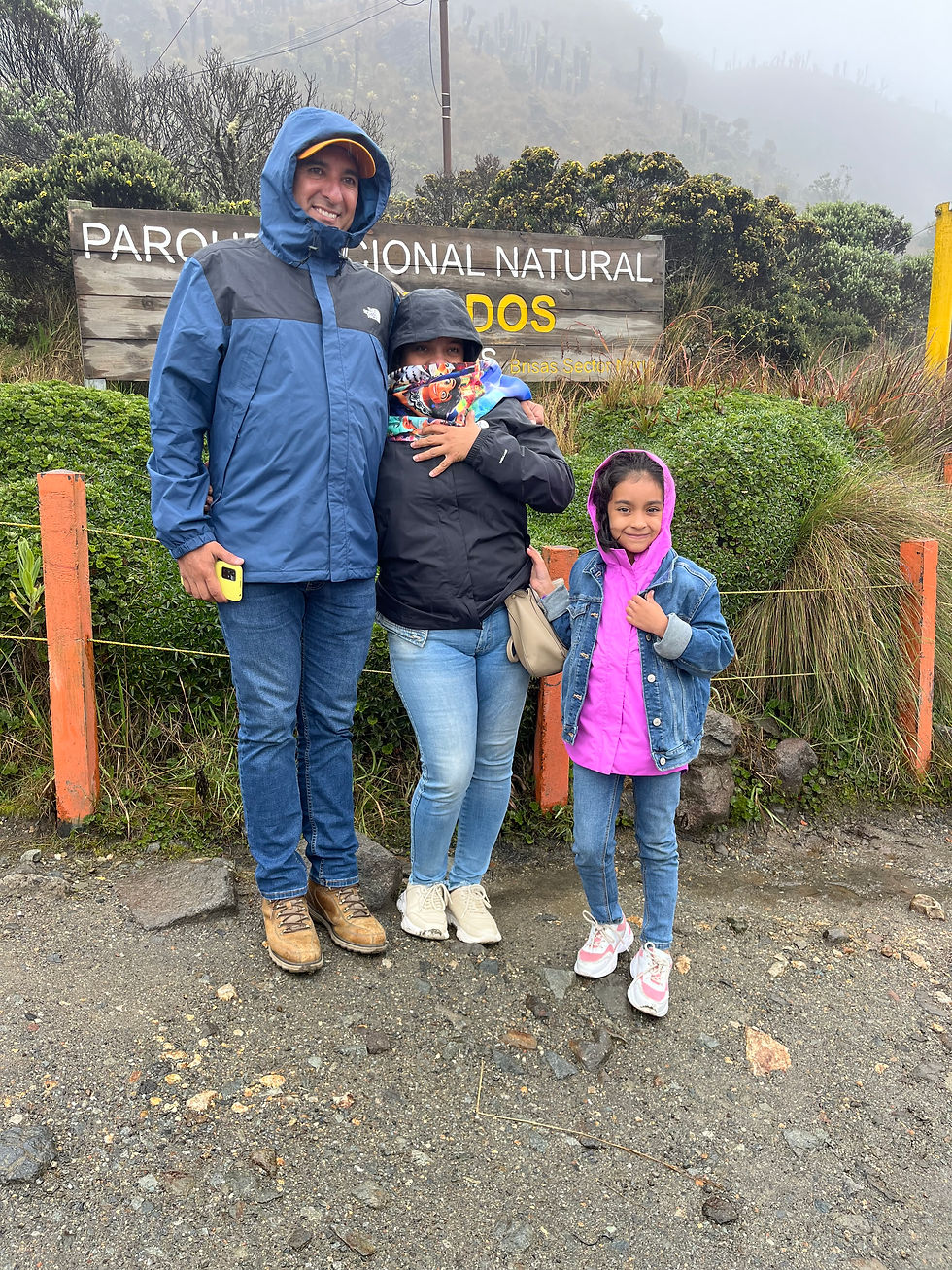The Path of a Coffee Bean According to Susana and Rafa
- Mason Maurer

- Jan 12
- 3 min read

Susana and Rafa are a couple who own a coffee farm in the small town of La Plata, Colombia. Located in the countryside, their farm sits on an incline with a spectacular view of the surrounding hills. I have had the wonderful opportunity to connect with them through a mutual friend, and since then they have explained to me the process of producing coffee beans. While seemingly labor-intensive, the process is straightforward and easy to follow. At the very beginning of this process, it starts with a seed bag. The seeds are then put into a bed for 70 days, after which they become saplings and are planted for the first time. Once some time passes as a little sapling in Susana and Rafa’s greenhouse, the plant graduates and is planted where it will sit for about 2 years before bearing fruit.
Once it bears fruit, the coffee cherries (the source of the “bean” on the coffee plant) will ripen and become red. The coffee cherries are then picked. Interestingly, coffee cherries are just fruit. They have an edible outside, and the bean that humans are after lies as the pit in the center. After they are picked and collected, they are moved into a large, multi-level shed where they undergo different processes. Here, the cherries are transformed into the coffee beans that we grind and roast. First, the cherries are separated by a machine. The pulp then gets stripped off of the bean and is sorted, with the pulp being dispensed onto a pile and the “good” beans getting put into a fermentation chamber. After that, they leave the shed and Susana and Rafa’s farm.
In order to not waste resources, the excess pulp from the picked coffee cherries is dried in a pile and converted to compost. This compost is then reutilized in order to help fertilize the coffee fields. After explaining how they grew their coffee, Rafa expanded on the challenges they face. In growing their coffee, Rafa says that climate change has had an effect on their yield. During the winters, excess rain has done damage to their crops, and hotter summers also wreak havoc on the plants. Even in an area that is quite optimal in topography and climate, rising temperatures and weather increasing in variability seem to be taking a toll. In order to fight back against this, Susana and Rafa have become increasingly involved in carbon capture. By planting trees in the middle of coffee fields, they are aiming to offset and reduce their ecological footprint within the environment. Currently, their farm has around 80 trees, but they are looking to more than double that in 2025 to over 200. Across Colombia, coffee growers have been making changes to better adapt for the changing climates. In the past few years, the Federación Nacional de Cafeteros (the national organization of coffee growers in Colombia) has had their research arm called Centicafe begin on development of bean varieties more resistant to heat and precipitation and coffee milling technologies that have gone on to save billions of gallon of water from waste. While statistics and negative outlooks touted in the media may portray agriculture in this part of the world as on its way out, farmers like Susana and Rafa across Colombia are making sweeping changes in order to prevent that reality.




















Comments